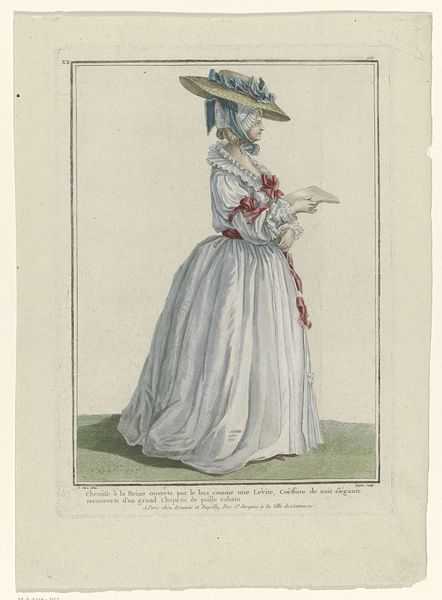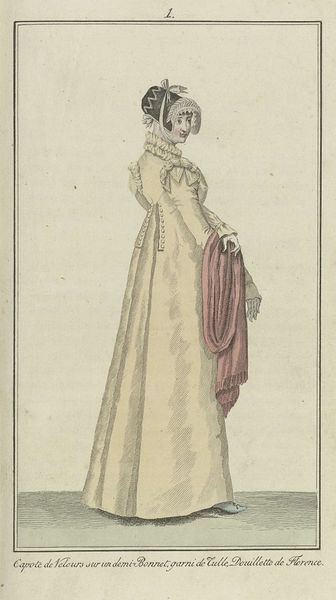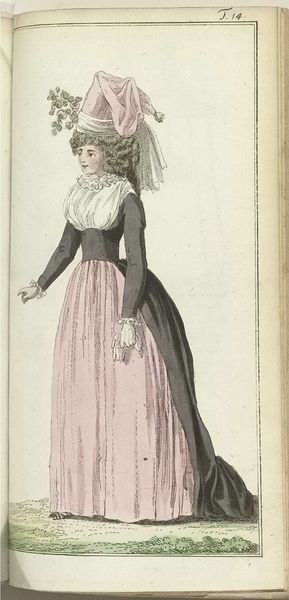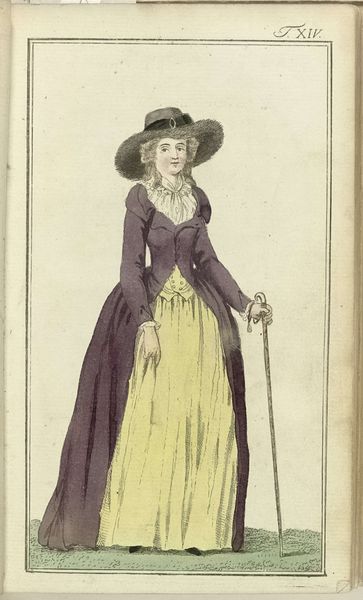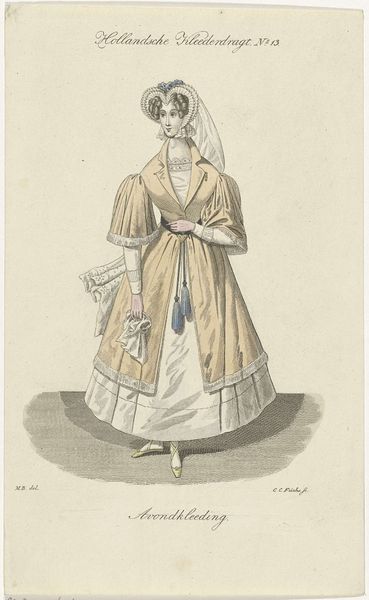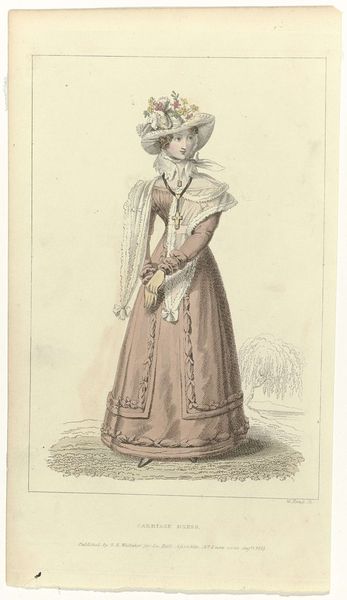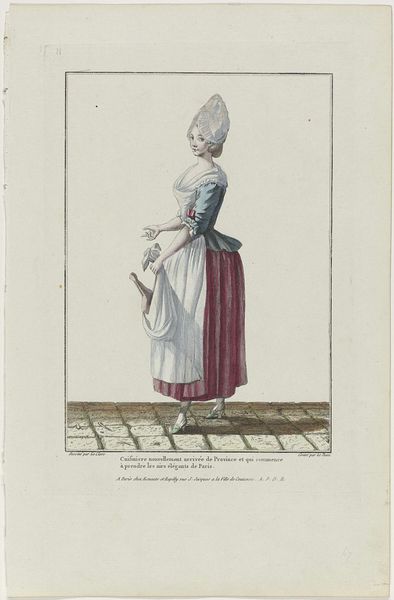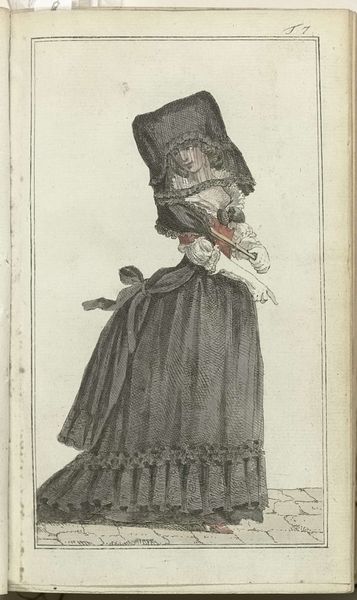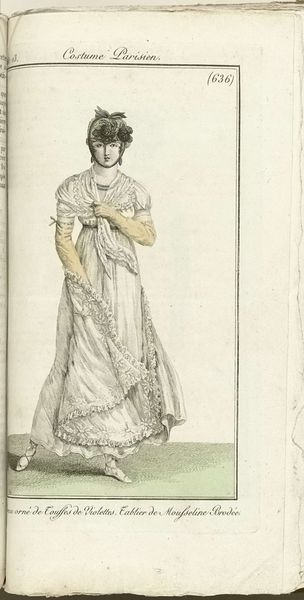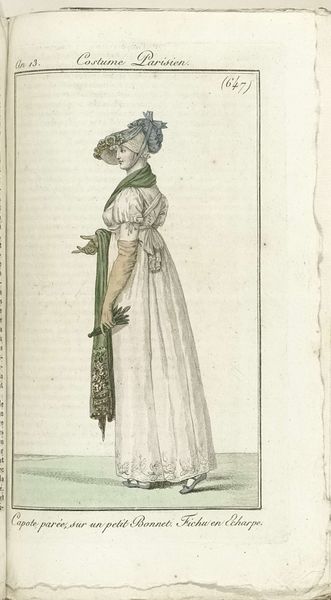
print, engraving
#
portrait
#
neoclacissism
# print
#
charcoal drawing
#
portrait drawing
#
genre-painting
#
engraving
#
realism
Dimensions: height 220 mm, width 148 mm
Copyright: Rijks Museum: Open Domain
Editor: Here we have "Vrouw met brede hoed," or "Woman with Wide Hat," possibly created between 1772 and 1833 by Mathias de Sallieth. It's an engraving, currently held at the Rijksmuseum. What really strikes me is how this detailed print manages to feel so grounded in its portrayal of everyday life, especially through the woman's unusual headwear. What do you see in this piece? Curator: What I find particularly interesting is the tension between the ambition of Neoclassicism and the depiction of, as you say, everyday life. The clear lines and focus on the figure align with Neoclassical ideals, yet the subject is not a mythological figure, but a woman seemingly from the working class. Consider the social and political climate – what does it tell us that an artist chose to represent this woman and her distinct style? Was it meant to document a vanishing culture or possibly poke fun at popular fashion trends among lower social groups? Editor: That's a great point about Neoclassicism intersecting with "realism." It makes me wonder about the intended audience. Would the elite find it exotic or amusing, while others might find it relatable or even a point of pride? Curator: Precisely. It’s fascinating to think about how this image, circulating as a print, may have reinforced existing social hierarchies, or perhaps, inadvertently, challenged them by giving prominence to an otherwise marginalized figure. The choice of print medium, too, is significant; prints were more accessible than paintings, enabling wider distribution and influencing public perception. Think about its display in homes. Editor: I hadn't thought about the impact of it being a print. It really puts into perspective how art can be both a reflection of and a participant in the social currents of the time. It's more than just a portrait; it’s a social document. Curator: Exactly. Analyzing its cultural context is as vital as appreciating its artistic technique. Understanding the intended audience and the modes of circulation provides essential insight into its original meaning and its potential social impact.
Comments
No comments
Be the first to comment and join the conversation on the ultimate creative platform.
